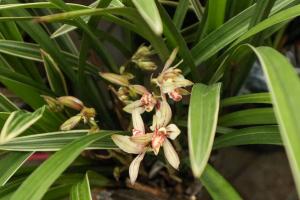Introduction
Tomatoes are a popular crop all around the world, but unfortunately they are easy prey for diseases. It can be frustrating to have your plants struck down by pests or diseases, leaving you with little to harvest. However, with some attention and care, you can control and prevent tomato plant diseases. Below are some tips to help you keep your tomato plants healthy and fruitful.
Choose disease-resistant varieties
One of the easiest ways to prevent tomato plant diseases is to choose varieties that are naturally resistant to them. Check with local garden centers or seed catalogs for recommended varieties that are well-suited to your region. Look for terms such as “disease-resistant” or “tolerant” when choosing your seeds or plants.
Provide proper spacing and support
Tomato plants require proper spacing and support to reduce the risk of diseases. Crowded plants can trap moisture, creating a hospitable environment for disease-causing pathogens. Ensure you leave enough space between plants to allow for good air circulation, typically around 18 to 24 inches. Also, provide a trellis or other support mechanism to keep the plants off the ground and eliminate contact with soil-borne pathogens.
Water consistently and appropriately
Overwatering or underwatering your plants can leave them vulnerable to disease. When watering tomatoes, ensure they are getting enough, but not too much, water. Aim for soil that is moist but not waterlogged or saturated. Consider using drip irrigation to deliver water evenly to the root zone, minimizing water contact with leaves.
Fertilize properly
Tomatoes need the right balance of nutrients to stay healthy and strong. Overfertilizing can lead to excessive foliage growth, which can trap moisture, creating a breeding ground for diseases. Use a balanced or slow-release fertilizer, and avoid applying it directly to the plant leaves or stems. Follow package directions and only use as much as needed, no more.
Inspect regularly and act promptly
Regularly inspect your tomato plants for signs of diseases, such as spots on leaves, wilting, or blackened stems or fruit. Early detection and action can help prevent the spread of disease to other plants. If you find diseased plants, remove them immediately and dispose of them in the trash. Do not compost diseased plants or plant parts, as the pathogens can survive and infect future crops.
Conclusion
Preventing and controlling tomato plant diseases requires some attention and care, but the rewards of a healthy and fruitful harvest are well worth it. By choosing disease-resistant varieties, providing proper spacing and support, watering and fertilizing appropriately, and regularly inspecting and acting promptly, you can effectively control tomato plant diseases and enjoy long-lasting plants.

 how many times do yo...
how many times do yo... how many planted tre...
how many planted tre... how many pine trees ...
how many pine trees ... how many pecan trees...
how many pecan trees... how many plants comp...
how many plants comp... how many plants can ...
how many plants can ... how many plants and ...
how many plants and ... how many pepper plan...
how many pepper plan...






























